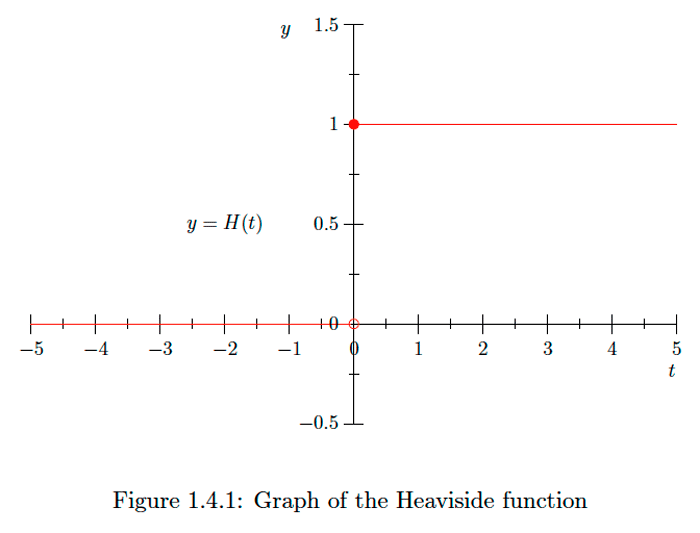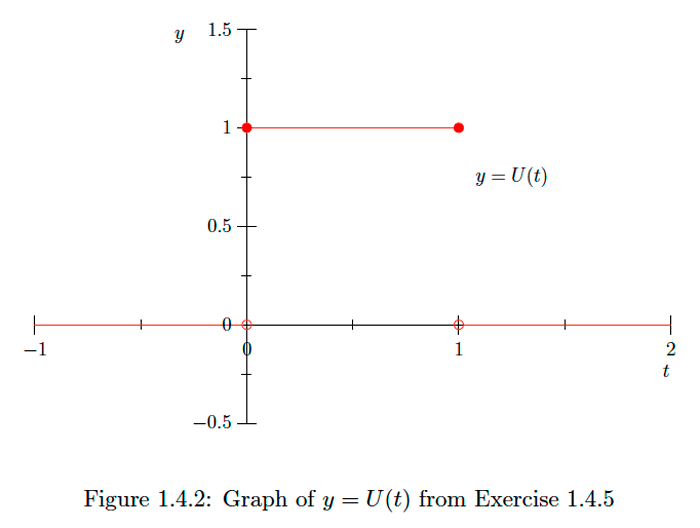1.4: Continuous Functions
( \newcommand{\kernel}{\mathrm{null}\,}\)
As (1.2.8) indicates, we would like to define the rate of change of a function y=f(x) with respect to x as the shadow of the ratio of two quantities, dy= f(x+dx)−f(x) and dx, with the latter being a nonzero infinitesimal. From the discussion of the previous section, it follows that we can do this if and only if the numerator dy is also an infinitesimal.
Definition
We say a function f is continuous at a real number c if for every infinitesimal ϵ,
f(c+ϵ)≃f(c)
Note that f(c+ϵ)≃f(c) is equivalent to f(c+ϵ)−f(c)≃0, that is, f(c+ϵ)−f(c) is an infinitesimal. In other words, a function f is continuous at a real number c if an infinitesimal change in the value of c results in an infinitesimal change in the value of f.
Example 1.4.1
If f(x)=x2, then, for example, for any infinitesimal ϵ,
f(3+ϵ)=(3+ϵ)2=9+6ϵ+ϵ2≃9=f(3).
Hence f is continuous at x=3. More generally, for any real number x,
f(x+ϵ)=(x+ϵ)2=x2+2xϵ+ϵ2≃x2=f(x),
from which it follows that f is continuous at every real number x.
Exercise 1.4.1
Verify that f(x)=3x+4 is continuous at x=5.
Exercise 1.4.2
Verify that g(t)=t3 is continuous at t=2.
Solution
Given real numbers a and b, we let
(a,b)={x|x is a real number and a<x<b},
(a,∞)={x|x is a real number and x>a},
(−∞,b)={x|x is a real number and x<b},
and
(−∞,∞)=R.
An open interval is any set of one of these forms.
Definition
We say a function f is continuous on an open interval I if f is continuous at every real number in I.
Example 1.4.2
From our example above, it follows that f(x)=x2 is continuous on (−∞,∞).
Exercise 1.4.3
Verify that f(x)=3x+4 is continuous on (−∞,∞).
Exercise 1.4.4
Verify that g(t)=t3 is continuous on (−∞,∞).
Exercise 1.4.3
We call the function
H(t)={0, if t<0,1, if t≥0, 
Note that, in the previous example, the Heaviside function satisfies the condition for continuity at 0 for positive infinitesimals but not for negative infinitesimals. The following definition addresses this situation.
Definition
We say a function f is continuous from the right at a real number c if for every infinitesimal ϵ>0,
f(c+ϵ)≃f(c).Example 1.4.4
In the previous example, H is continuous from the right at t=0, but not from the left.
Of course, if f is continuous both from the left and the right at c, then f is continuous at c.
Example 1.4.5
Suppose
f(x)={3x+5, if x≤1,10−2x, if x>1.Exercise 1.4.5
Verify that the function
U(t)={0, if t<0,1, if 0≤t≤1,0, if t>1,Definition
If a and b are real numbers, we say a function f is continuous on the closed interval [a,b] if f is continuous on the open interval (a,b), continuous from the right at a, and continuous from the left at b. We say f is continuous on the closed interval [a,∞) if f is continuous on the open interval (a,∞) and continuous from the right at a. We say f is continuous on the closed interval (−∞,b] if f is continuous on (−∞,b) and continuous from the left at b.

Example 1.4.6
We may summarize our results about the Heaviside function as H is continuous on (−∞,0) and on [0,∞).
Exercise 1.4.6
Explain why the function U in the previous exercise is continuous on the intervals (−∞,0),[0,1], and (1,∞), but not on the interval (−∞,∞).


